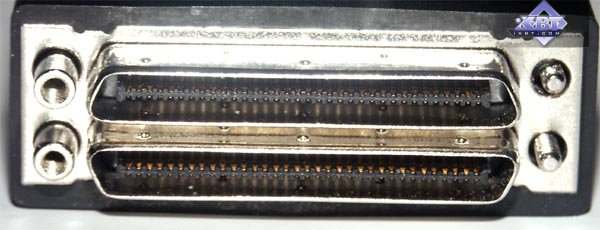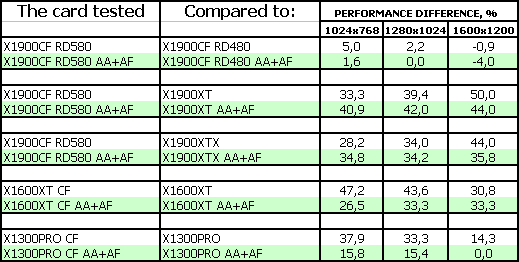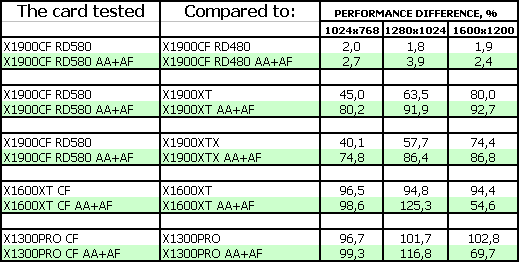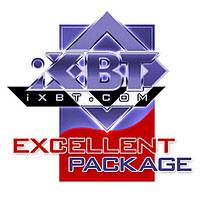 |
||
|
||
| ||
TABLE OF CONTENTSOur today's article is not usual. First of all, all experienced users know well that video cards of the RADEON X1900 XT/XTX level are manufactured on third-party plants, ordered by ATI. That's why any ATI partner has nothing to do with their manufacturing. All vendors, including ASUSTeK, buy ready cards from ATI and just sell them under their brands. That's why today we shall just review the ASUS bundle. Secondly, we published an article about the new ATI RD580 chipset aka Xpress 3200 CrossFire not long ago. Preparing CrossFire tests on the new motherboard was our lab's responsibility. Even though the results were good, we had a lot of gripes with the quality and multiple artifacts, mentioned in this article. It turned out that the problem was in the buggy BIOS of the motherboard. Having got the new version, we re-ran the tests to find out that the problem with artifacts was fixed. That's why taking advantage of availability of a master card X1900 XT CFE in our lab, we are going to publish final CF test results on RD580. Let's examine the cards first - the main object of our review. We have tested two cards today: an X1900 XTX -based card and an X1900 XT -based card, the latter being CrossFire Edition.
Video Cards
As I have already written, ASUS only stuck its labels on the cooler. Everything else is of the reference design. Considering the question constantly asked in forums "Which card is better - X1900 XTX from Sapphire, HIS etc?" I repeat that all X1900 XT/XTX/CFE cards are manufactured by ATI itself (that is they are manufactured by its orders on third-party plants), so they ARE ALL THE SAME!
The cards have TV-Out with a unique jack. You will need a special bundled adapter to output video to a TV-set via S-Video or RCA. Analog monitors with d-Sub (VGA) interface are connected to DVI with special DVI-to-d-Sub adapters. Maximum resolutions and frequencies:
We can also see that the X1900 XT CFE is actually a regular X1900 XT, deprived of VIVO and even TV-out for the sake of CF. Just a bare video card without usual additions. Is it a disadvantage? I think it is not. If you plan on installing CF later, that is to buy the second video card after the first, the first card to be bought must be a regular X1900 XT with VIVO. Only then you should buy a CF Edition product.
The card is equipped with two jacks: the first is DVI (Dual-Link, of course), the second is a special CrossFire-out:  A special adapter-composer is plugged into it.  One of its ends goes to the second video card (DVI), the other is used to connect a monitor. There is no point in describing the cooling system, I guess - it's a reference design, we have already written about it many times.
Bundle Packages.
Installation and DriversTestbed configuration:
VSync is disabled.
Test results: performance comparisonWe used the following test applications:
Summary performance diagramsI repeat that this article is devoted to analyzing not only X1900-cards, but also to CrossFire on RD580, so we also publish X1300 CF/X1600 CF test results. Here is the reason for using old drivers. I'll remind you that the article about RD580 was published on March 1st and all the tests below were carried out in late February. At that time the latest drivers were CATALYST 6.2 and ForceWare 81.98. Having updated BIOS, I re-ran our tests using the latest drivers, of course. But there were almost no differences in terms of CrossFire operation compared to the previously obtained results. That's why we publish complete information on February tests, which are still valid today. The difference is only in DISAPPEARED ARTIFACTS, mentioned in the article about RD580.
Game tests that heavily load vertex shaders, mixed pixel shaders 1.1 and 2.0, active multitexturing.FarCry, Research
Game tests that heavily load vertex shaders, pixel shaders 2.0, active multitexturing.F.E.A.R.
Splinter Cell Chaos Theory
Call Of Duty 2 DEMO Half-Life2: ixbt01 demo

Game tests that heavily load pixel pipelines with texturing, active operations of the stencil buffer and shader unitsDOOM III High mode Chronicles of Riddick, demo 44

Synthetic tests that heavily load shader units3DMark05: MARKS 3DMark06: Shader 2.0 MARKS
 3DMark06: Shader 3.0 MARKS

You can find our comments in the conclusions. ConclusionsFirst of all we can see that CrossFire really works with Low-End cards, which do not require being connected with a special adapter or a master card. Performance gains are evident. We still have some questions - how many games? And how they are supported by this technology on the whole? Unfortunately, 95% of games do not have benchmarks, so we can evaluate CF operation only by eye. We can only trust ATI, who claims that CrossFire works in all games by default and that driver profiles only raise efficiency of this technology (competitors contend that CF won't work if there is no ATI driver profile for this or that game). I repeat that there are no problems with quality any more, the trouble was in the motherboard. Now about ASUS products:
You can find more detailed comparisons of various video cards in our 3Digest.
ASUS EAX1900XT CrossFire (RADEON X1900 XT CrossFire Edition) 512MB PCI-E gets the Excellent Package award (April). 
Theoretical materials and reviews of video cards, which concern functional properties of the GPU ATI RADEON X800 (R420)/X850 (R480)/X700 (RV410) and NVIDIA GeForce 6800 (NV40/45)/6600 (NV43)
Write a comment below. No registration needed!
|
Platform · Video · Multimedia · Mobile · Other || About us & Privacy policy · Twitter · Facebook Copyright © Byrds Research & Publishing, Ltd., 1997–2011. All rights reserved. | |||||||||||||||||||||||||||||||||||||||||||||||||||||||||||||||